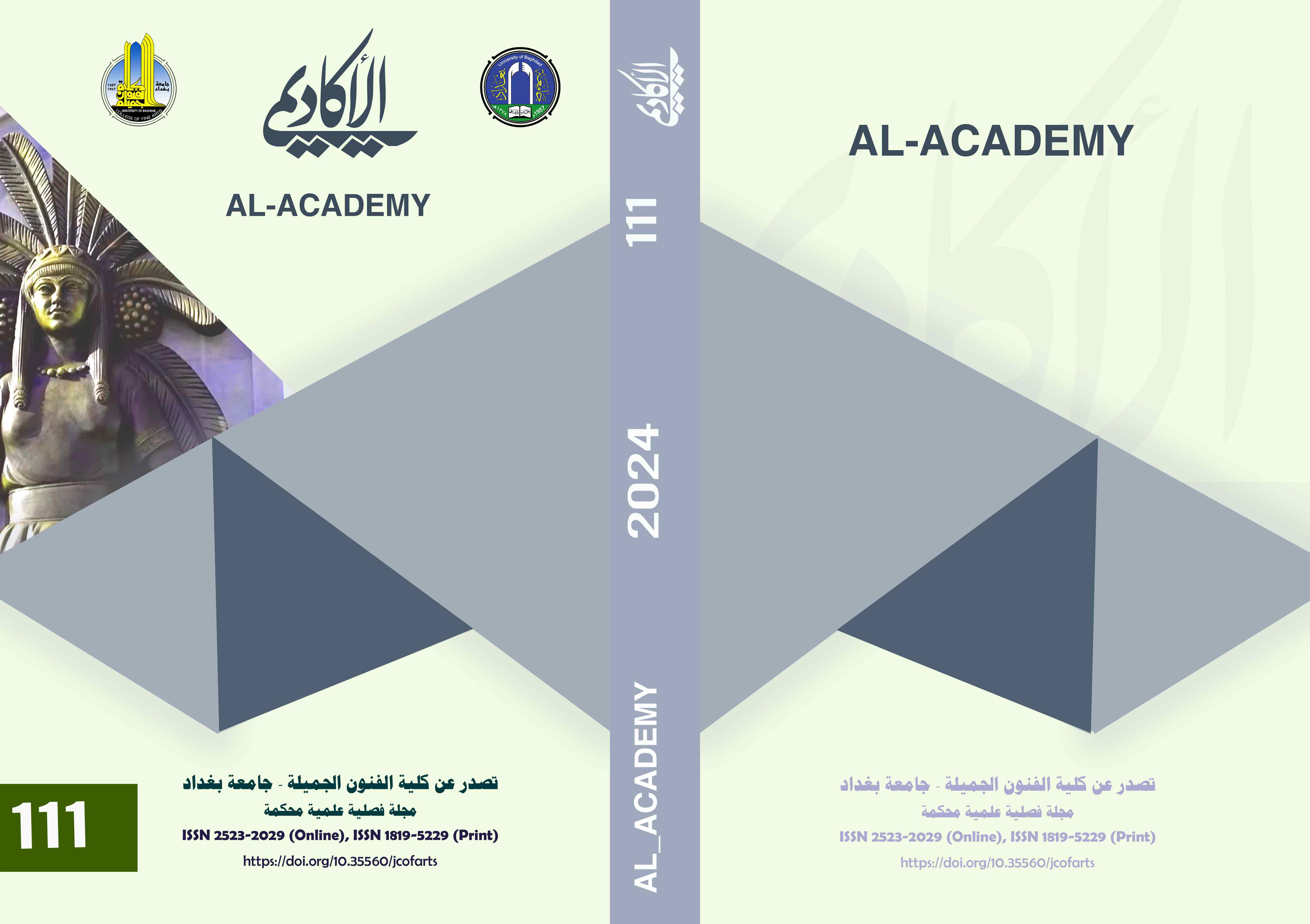Stylistic features in the works of (Noman Hadi)
DOI:
https://doi.org/10.35560/jcofarts1184Keywords:
stylistic features, Noman HadiAbstract
The Iraqi plastic movement began since the first half of the twentieth century, that is, nearly a hundred years ago. It passed through different stages and harbingers that changed its paths and the visions of the artists working from the generations of the last century. Therefore, the problem of tabulating and documenting these experiences and artistic uses that witnessed various political, unanimous and economic fluctuations during The recent decades, which constituted pressing and influencing factors on the human level and on the artistic achievement that expresses the concerns, alienation and suffering of the Iraqi plastic artist, and the loss of an important part of the formal aspect of the artistic image expressing the history and civilization of Iraq and the culture of its people, as well as the loss of much of the documentary aspect of that stage and a painful example of that It is the violation of the Museum of Arts during the American occupation in 2003 AD, and not long ago these pressures formed on the structure of the social and cultural stability of the country, which prompted many artists to migrate outside Iraq, causing the loss of an important part of the link between the generation of pioneers and the generations that follow, including some names The task from this stage is Salah Jiyad, Faisal Laibi, Noman Hadi, Ghassan Faydi, Karim Al-Asadi, Kazem Khalifa, Muhammad Faradi, Ali Fanjan, and others; Although the artistic style of these artists at this stage was clearly influenced by the methods of the pioneers, the impact of alienation and the influence of social culture and the Western environment was evident in those works later, and this does not mean that they left their Iraqi environment at all, but rather you find that their adherence to the civilization of Iraq In their different Sumerian, Babylonian, and Assyrian forms, it is clear with clarity, and evidence can be found for their adherence to their original Iraqi roots, noting the influence of the Western environment on the expressive and formal image of their works, which calls for this paradox for study and analysis.
Our research deals with one of the expatriate artists, Noman Hadi, who grew up in a stage in the middle of the history of the plastic movement, a member of the group of academics from the generation of the seventies, and through him we review the following question.
What are the stylistic features in Noman Hadi's work?
References
Al-Kinani, Muhammad, composition systems in the drawings of the artist, Jawad Selim. Baghdad, Academic Journal. College of Fine Arts, (2009)
Akram Gerges Nehme, The Semiotic Approach in Contemporary Graphic Text Analysis, Academic Journal. College of Fine Arts, Issue 105 (9/15, 2022)
Gibran Masoud, Al-Raed (a linguistic dictionary), 7th edition, Beirut, Lebanon, Dar Al-Ilm for Millions. (1992)
Haidar Khatban Obeid, The Political Discourse in Faisal Laibi's Drawings, Baghdad: Academic Journal. College of Fine Arts, Issue 100 (15 6, 2021)
Salah Fadel, The Science of Stylistics, Its Principles and Procedures, 1st edition, Cairo, Egypt, Dar Al-Shorouk. (1998)
Georgi Gachev, Awareness and Art, T: Nofal Nayouf, Kuwait, National Council for Culture, Arts and Literature. (1990)
Kazem Haider, statement of the Academics Group, Baghdad, Iraq. (1971)
Lalande, Andre, Lalande's Philosophical Encyclopedia, 2nd Edition, T: Khalil Ahmad, Beirut - Paris: Oweidat Publications. (2001)
Muhammad Fahmy Abbas, expressive features in the drawings of the artist Abdel-Razzaq Yasser. Academic Journal. College of Fine Arts, Issue 91 (25 March 2019)
Muhammad Ali Alwan, Lecturer in the History of Contemporary Iraqi Art, Faculty of Fine Arts, University of Babylon. (30 3, 2021) http://finearts.uobabylon.edu.iq/lecture.aspx?depid=2&lcid=92940
Naman Hadi, A Subjective Experience, Retrieved from http://namanhadi.com/texts/tagroba-thatea.pd (2000)
Noman Hadi, Magazine Program, Interlocutor: Saif Al-Khayyat, Paris, France: Al-Iraqiya TV. (May 12, 2012)
Noman Hadi, correspondent via e-mail, interviewer, Ahmed Aziz. (4, 7, 2021)
Naman Hadi, official website of the artist. Retrieved from www.NamanHadi.com
Hauser, Arnold Hauser, Philosophy of Art History, T: Ramzi Abdo Gerges, Cairo, Egypt, National Center for Translation. (2008)
Monroe, Thomas, Development in the Arts, Translated by: Muhammad Ali, The Egyptian General Book Organization, Cairo, Egypt, Part 2, (1972)
Reed, Herbert, Education Through Art, translated by: Abdel Aziz Tawfik, The General Book Authority, Cairo, Egypt, (1996)
Downloads
Published
Issue
Section
License
Copyright (c) 2023 Ahmed Aziz Awaid, Jawad Al-Zaidi

This work is licensed under a Creative Commons Attribution 4.0 International License.













